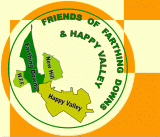 |
|
PRESENTATION
ANNUAL GENERAL MEETING WEDNESDAY 6TH NOVEMBER 2019
Jonathan Halls — Wilderness in the City.
Jonathan is an Artist, an Archivist and an Illustrator. He grew up in Hayes bordering the Green Belt. Nowadays he works with drawing, writing, walking, workshops and installations. The question he starts with is ‘How do we value nature’? He exemplified each aspect of his talk by slides, some images, some illustrations, drawings, fact sheets, questions etc?
Looking at Green Belt properties, Jonathan asks ‘How do we intervene in nature’? His first project was to look at how trees are suffering. What interventions can we make? How does the amount of light affect things? Jonathan did volunteering with the Friends of Hayes Common. His crusade is to engage people and to get their opinions. What if we allow more light among the trees? How will this affect the flowers and the birds? Jonathan wanted to get feed-back on the issue of building in the Green Belt. He set up a fake property company, condoning off a fake housing area, putting up notices and talking to local people and those passing by. Using his drawing skills, Jonathan translated the woods into illustrated drawings. He finds this an excellent way of engaging with people.
Jonathan asked the question, ‘Does green space equal Open space equal Nature? It depends on the definitions of each. He went on to define ‘green space’, its use, its value etc. Likewise ‘natural areas’ and ‘wilderness’. Question: How do we let nature do its own thing? We looked at charts and maps of land use in England: farmland, pastures, arable land, orchards, vineyards, moors, forests, lakes, grasslands, buildings, roads, airports, quarries, parks, gardens, golf courses, football pitches etc. What is the state of nature? It may have declining value but perhaps growing support.
Jonathan looked at the nature in Croydon and concluded that the only wild areas nowadays were the railway lands and he wanted to explore nature along the tracks. He invented a project, ‘Croydon Railway Nature Trail’. He produced posters showing birds, animals and maps – he produced leaflets and a booklet. He invited people to walk along the trail (in theory) and hence to question where nature should be in Croydon. It is clear that there is a lack of understanding from Network Rail as to the value of their track wildways. They have 20,000 miles of track, 50,000 acres of land and 10 million trees. But Network Rail’s Vegetation Management Review requires 6m width of track, no growth above 6ft. Their contractors are not required to have and do not have any knowledge or expertise of trees and habitats.
The idea behind the ‘Croydon Railway Nature Trail’ is a different way of viewing nature, people, opportunities, jobs, and public assets. There are examples on disused railway land: ‘New Cross Gate Cutting’ and Addington Railway (linear) Park’ – this latter coming from the audience. His major suggestion is that there should be environmental officers whose job is to liaise with the railways. There needs to be a lobbying group / research body for Network Rail proposals including offices and schools. An opportunity exists for the railway corridors to link up the existing nature reserves and to review the mix of nature and housing and perhaps golf courses – is nine nearby golf courses too many?
Discussion and Questions from the Floor:
Dominic North (Happy Valley Warden) had difficulty convincing those responsible for the power lines, not to demolish trees along the route. Thankfully, the dormice habitats were saved.
A resident said how disappointed we had been when trees were cut down along the track adjacent to the Brighton Road. Could Jonathan recommend the ‘right kind of tree’ that didn’t grow tall and could be suggested to the railways? Jonathan mentioned Scots Pine, but said he wasn’t a tree expert.
Many suggestions from the floor were along the lines: ‘You should approach so-and-so’, ‘You should set up such-and-such’. [I spoke to Jonathan later. He’s an artist and illustrator with a lot of pertinent ideas. But he’s not an activist nor does he have the experience of protest. However, he would be very willing to act as consultant, were a local pressure group to be established.]
The Chairman thanked Jonathan for coming this evening and hoped that some of his ideas could be brought to fruition in due course. Great enthusiasm was shown by members for Jonathan’s presentation and ideas.
|
|
|
|
|
|

















































